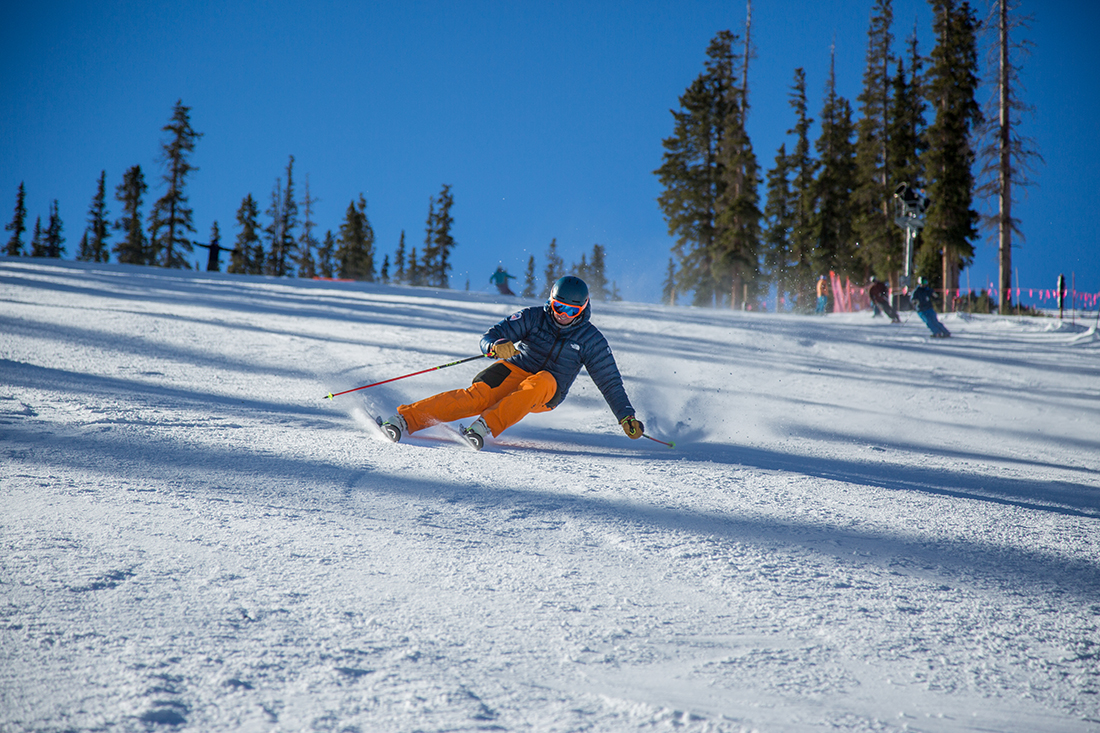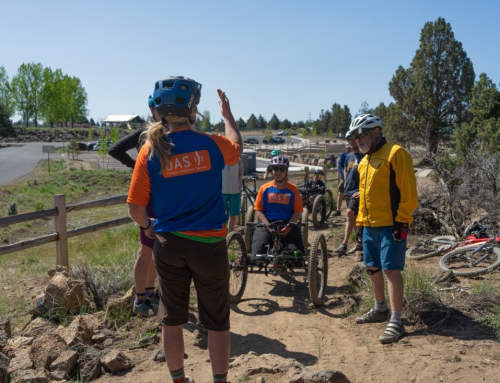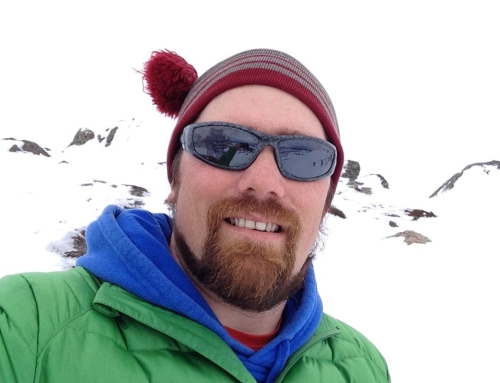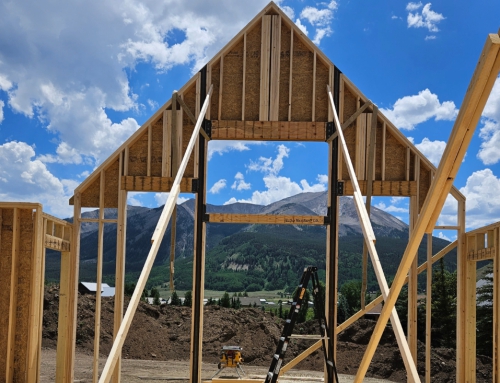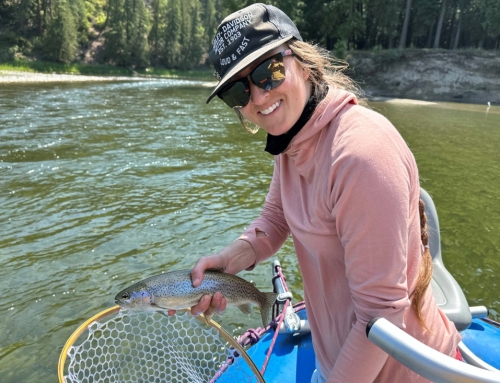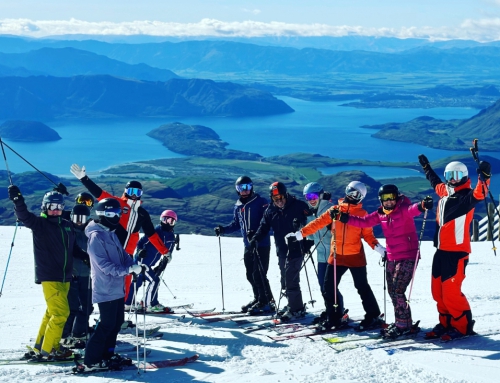32 Degrees: 3 Tips to Smooth Out Your Turn Transitions
In this article, that appears in the Winter 2022 issue of 32 Degrees, PSIA Alpine Team member Kevin Jordan, co-author of Teaching Children Snowsports and the Freestyle Technical Manual, discusses how to make better turns by focusing on the transitions.
When describing a ski turn, the terms “apex” and “transition” come up. When performing a turn an apex-to-apex focus may help you dial in those all-important transitions.
According to PSIA’s Alpine Technical Manual, the apex is “the farthest point of a turn, approximately, midway through the arc, in which the skis point straight down the fall line.” The transition of a turn “begins during the finish phase of a turn and continues into the initiation of a new turn.” I think of the apex as the point where the skis (more specifically, the toe pieces of the bindings) point straight down the fall line, and the transition as the period that connects a pair of apexes. Thinking about turns from apex to apex provides a more visual framework and allows for more time getting into and out of the turn.
The apex may vary with situation and intent. In other words, the snow conditions or what you’re trying to do (e.g., synchronized skiing, bump skiing, or ripping around on groomers) may impact where you put the apex of your turn. Generally speaking, these three apex-oriented tips can help you get the most out of your turn transitions.
Tip #1: Don’t Hang onto the Turn
Once you pass through the apex of a turn, it’s over. In other words, there’s no need to try to hang onto that turn in an extended “park and ride.” You can make adjustments due to terrain and speed, but this is the time to start decreasing your edge angle and moving your center of mass (CM) over your skis so you can more easily release the pressure at the end of the turn.
Speed control still comes from the shape of the entire turn and changing direction. However, if you were to hang onto that turn longer, your CM would still be inside at the conventional end of the turn. This could cause you to make sequential movements: a vertical move, followed by a realignment of your CM, and then a move into the new turn. Sequential movements are not ideal because they diminish the flow from one turn to the other.
Tip #2: Switch Sides With Center of Mass and Skis
To move out of one turn and into the next, your CM and skis must switch sides with each other. The key to high-performance is to do this smoothly, deliberately, and in a way that allows you to engage the snow accurately at the next apex. Simply put, your CM needs to follow a smooth path down the hill.
After the apex and during the finish of a turn, it’s helpful to focus on making sure your current outside ankle, knee, and hip flex and come back under your CM. This enables you to manage pressure more effectively at the end of the turn and switch sides.
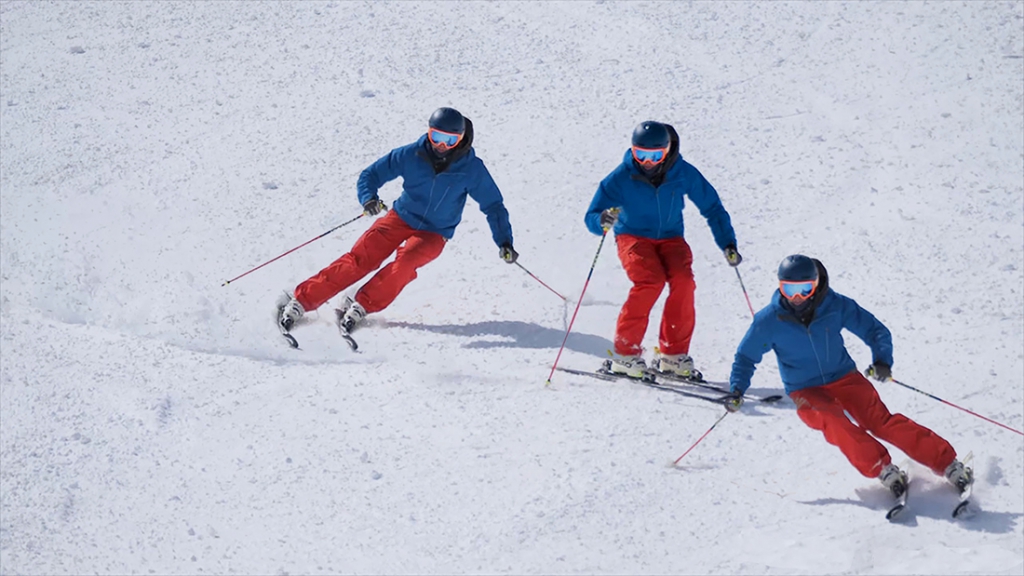
Tip #3: Make In-and-Out Movements
As forces build throughout a turn, you can manage them by controlling edge angles. If you think about pressure as “pounds per square inch, or PSI” then when you increase edge angle, you decrease surface area and pressure increases. When you decrease edge angle, and the surface are increases, you reduce pressure because it is spread out over a larger area. I like to increase my edge angles by moving my shoulders and spine toward the outside of the turn, and my lower legs (which bring my hips along for the ride) toward the inside – as shown by the arrows in the third frame of photo. To reduce my edge angles, I move them in the other direction so I can get out of the turn smoothly, with power.
A good transition between apexes is smooth, fluid, and continuous, with no “flat spots” where the skier is looks static. By the time you pass through an apex, you should have visualized where the next apex will be. So, to make the right movements, and make them well:
- Put the last turn behind you by decreasing edge angles and moving your CM out of the turn.
- Switch sides with your CM and skis, in a smooth path toward the next apex.
- Move your lower legs into the turn and your shoulders out to control the edge angles that will manage the new turn’s forces.

